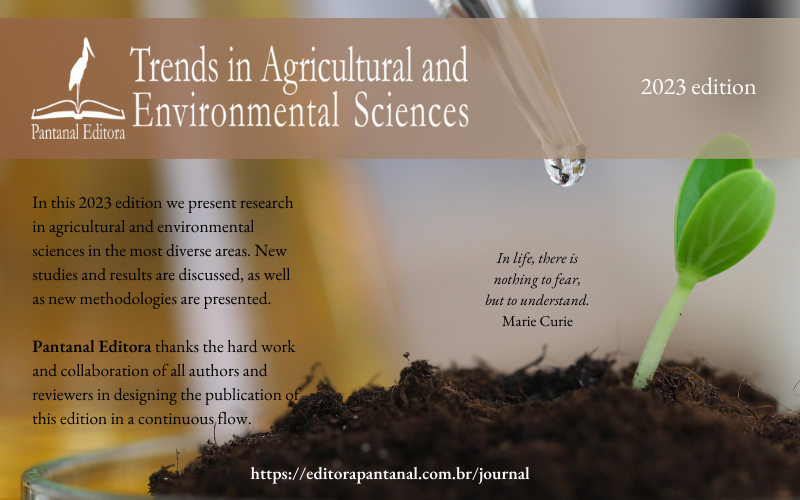Dataset: Forty soybean cultivars from subsequent harvests
DOI:
https://doi.org/10.46420/TAES.e230005Keywords:
Glycine max L., grain productivity, sowing times, soybeansAbstract
Soybean cultivation is one of the most important because it is used in several segments of the food industry. The evaluation of soybean cultivars subject to different planting and harvesting characteristics is an ongoing field of research. In this paper, we present a dataset obtained from forty soybean cultivars planted in subsequent seasons. The experiment used randomized blocks, arranged in a split-plot scheme, with four replications. The following variables were collected: plant height, insertion of the first pod, number of stems, number of legumes per plant, number of grains per pod, thousand seed weight, and grain yield, resulting in 320 data samples. The dataset presented can be used by researchers from different fields of activity.
References
MARANHÃO - GOVERNO DO ESTADO DO MARANHÃO. Gerência de Planejamento e Desenvolvimento Econômico - GEPLAN. Atlas do Maranhão. São Luís: Universidade Estadual do Maranhão, 2002. p.39.
McKinney, W. (2010, June). Data structures for statistical computing in Python. In Proceedings of the 9th Python in Science Conference (Vol. 445, No. 1, pp. 51-56).
Passos, M.L.; Zambrzycki, G.C.; Pereira, R.S. Balanço hídrico climatológico e classificação climática para o município de Balsas-MA. Revista Scientia Agraria, v.18, n.1, p.83-89, 2017. doi: 10.5380/rsa.v18i1.48584
Santos, H.G. et al. Sistema brasileiro de classificação de solos, Embrapa, ed. 5, 2018.
Van Rossum, G., Drake Jr, F. L. (1995). Python tutorial. Centrum voor Wiskunde en Informatica Amsterdam, The Netherlands.
USDA. https://ipad.fas.usda.gov/cropexplorer/cropview/commodityView.aspx?cropid=2222000
Downloads
Published
Issue
Section
License
Copyright (c) 2023 Trends in Agricultural and Environmental Sciences

This work is licensed under a Creative Commons Attribution-NonCommercial-ShareAlike 4.0 International License.
Attribution-NonCommercial-ShareAlike 4.0 International (CC BY-NC-SA 4.0)
You are free to:
- Share — copy and redistribute the material in any medium or format
- Adapt — remix, transform, and build upon the material
The licensor cannot revoke these freedoms as long as you follow the license terms.
Under the following terms:
- Attribution — You must give appropriate credit, provide a link to the license, and indicate if changes were made. You may do so in any reasonable manner, but not in any way that suggests the licensor endorses you or your use.
- NonCommercial — You may not use the material for commercial purposes.
- ShareAlike — If you remix, transform, or build upon the material, you must distribute your contributions under the same license as the original.
- No additional restrictions — You may not apply legal terms or technological measures that legally restrict others from doing anything the license permits.
Notices:
- You do not have to comply with the license for elements of the material in the public domain or where your use is permitted by an applicable exception or limitation.
- No warranties are given. The license may not give you all of the permissions necessary for your intended use. For example, other rights such as publicity, privacy, or moral rights may limit how you use the material.
This is a human-readable summary of (and not a substitute for) the license.






